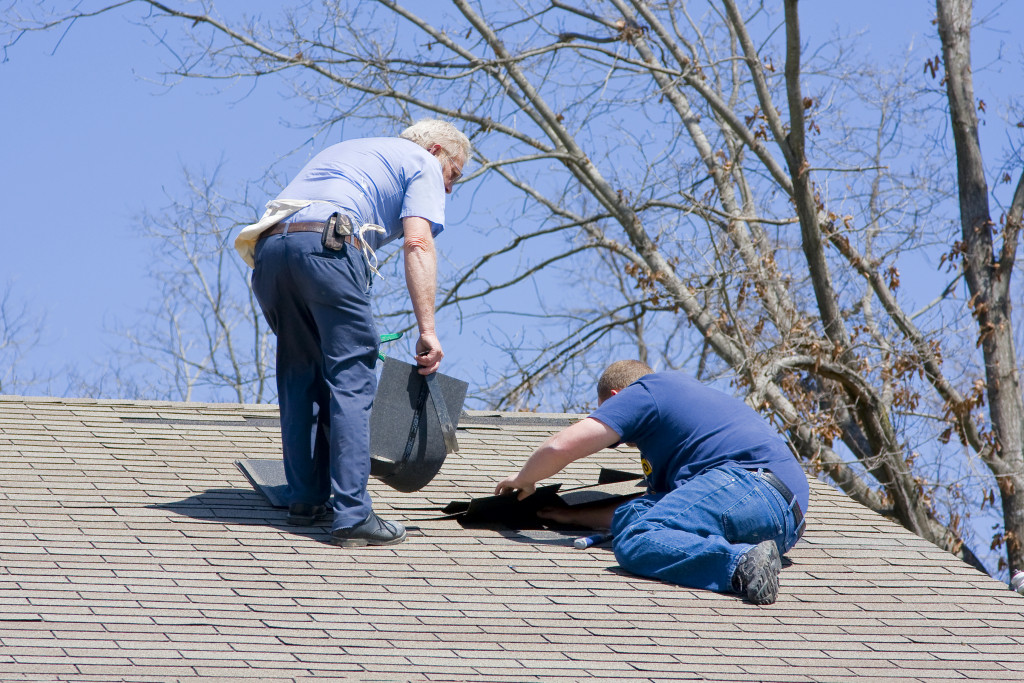It’s important to be aware of the causes of ceiling damage so that you can take steps to prevent it. Ceiling damage can lead to various problems in your home, including water damage, mold growth, and even structural damage. To keep your home in good condition, it’s essential to be proactive about preventing ceiling damage. Here are some tips for preventing ceiling damage in your home:
Replace Damaged Roof Shingles
Damaged roof shingles can lead to ceiling damage in your house for a few reasons. First, if the shingles are damaged, they no longer protect the underlying roofing material from the elements. This can cause the roofing material to deteriorate, leading to leaks.
Second, damaged shingles can also allow water to enter your attic, which can cause the insulation to become wet and lead to mold growth. Finally, if the shingles are loose or missing, they can allow wind to enter your attic, which can cause the temperature inside your home to rise and lead to further damage. To prevent these problems, it is crucial to replace damaged shingles as soon as possible.
If you find your roof damaged, you can seek help from roof replacement services. These service providers will inspect your entire roof to find any damage. They will then replace the roofing to ensure your ceiling is well protected.
Check Your Gutters
You may not realize it, but your gutters play an essential role in protecting your home from water damage. When rainwater falls, it can often pool around the foundation of your house or seep into cracks and crevices. Over time, this can lead to severe problems like mold growth, wood rot, and even structural damage.
That’s why keeping your gutters clean, and debris-free is so essential. Regularly checking and cleaning your gutters can help prevent water damage to your home. In addition, be sure to inspect your gutters for any signs of wear or damage.
Inspect Your Home for Leaks
One of the best ways to prevent ceiling damage in your house is to regularly inspect your home for leaks. Water leaks can cause a lot of damage to your ceilings, walls, and floors, so it’s important to catch them early. There are a few signs that you should look for that could indicate a water leak:
- Stains or discoloration on your ceiling: This is usually one of the first signs of a water leak. If you see any stains or discoloration on your ceiling, it’s vital to investigate further.
- Peeling or bubbling paint: If you notice that the paint on your ceiling is peeling or bubbling, it could signify a water leak.
- Water spots on your floor: If you have hardwood floors, water spots can indicate a leak above them.
If you notice any of these signs, it’s essential to call a professional immediately to fix the problem. Regularly inspecting your home for leaks is the best way to prevent ceiling damage.

Repair Cracks and Holes in Your Ceilings
Having cracks and holes in ceilings is unsightly and can lead to more significant ceiling damage if left unaddressed. Cracks can allow moisture to seep in, which can cause the growth of mold and mildew.
Holes can provide a way for insects and other pests to enter your home. In addition, cracks and holes can weaken the structure of the ceiling, increasing the risk of collapse. Fortunately, repairing cracks and holes is relatively easy and can help prevent further damage. For small cracks, simply apply a layer of joint compound and allow it to dry.
Use a piece of drywall tape to reinforce the joint compound for larger cracks. To repair a hole, cut a piece of drywall slightly larger than the hole and attach it using drywall screws. Then, apply the joint compound around the edges and allow it to dry.
Keep Your Attic Well-Ventilated
A well-ventilated attic helps to regulate the temperature in your home, preventing the build-up of heat and moisture. This, in turn, helps to protect your ceilings and walls from damage caused by condensation. In addition, good ventilation helps prevent mold and mildew growth, which can cause serious health problems.
As a result, it is essential to ensure that your attic is well-ventilated. One way to do this is to install an attic fan. Attic fans help to draw fresh air into the attic and push out stale, humid air. This helps to keep the attic cooler and drier, reducing the risk of condensation and mold growth. In addition, attic fans can also help to reduce energy costs by keeping your home cooler in the summertime.
It is important to keep your home in top condition by regularly inspecting it for leaks and damage. In addition, you should take steps to prevent further damage, such as keeping your attic well-ventilated and repairing cracks and holes in your ceilings. Taking these simple precautions can help protect your home from water damage, mold growth, and other problems.

